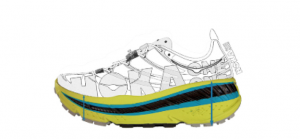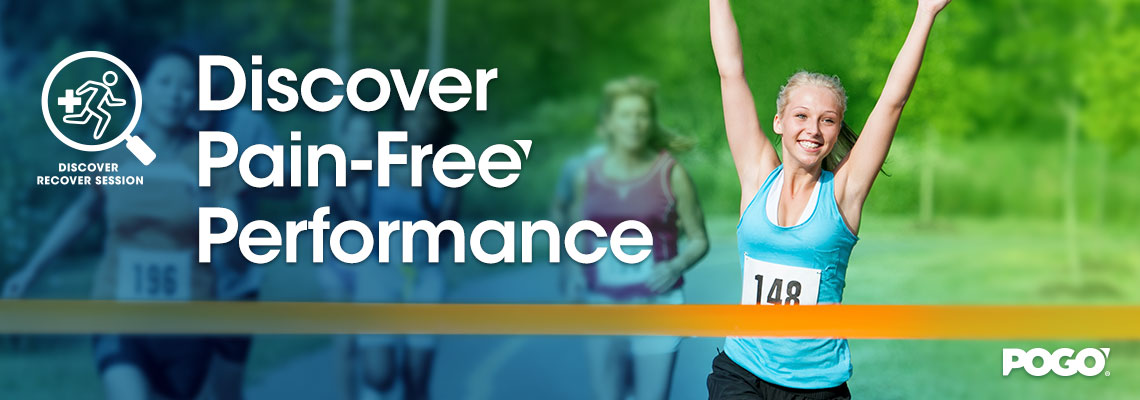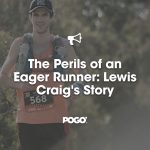Highly cushioned running shoes
Highly cushioned maximalist running shoes
Over the last several years since the release of You CAN Run Pain Free! there has been a strong worldwide emergence of the maximalist highly cushioned running shoe.
When I first saw the release of maximalist shoes my initial response was that it was ‘gimmicky’. I believed that it was a mere opposite marketing reaction to the trending minimalist running shoe movement.
In stark contrast to a minimalist running shoe a running maximalist shoe features an oversized and highly cushioned midsole. Maximalist shoes can have up to 2.5 times more cushioning than standard running shoes.

The oversize forefoot and rearfoot stack heights of HOKA One One shoes
The common attraction and belief about maximalist highly cushioned running shoes and the claim of some manufacturers is that because of their extra cushioning they would reduce lower limb loading, thereby assisting in reducing the likelihood of developing overuse running injuries. However, it has been shown that individuals tend to stiffen their leg when landing on soft surfaces. A stiffer leg during landing is not likely to attenuate shock as well as a compliant one. This will result in greater shock experienced by the leg.
Given the above upon release and popularisation of maximalist running shoes researchers wanted to ascertain the integrity of manufacturer’s claims that the extra cushioning of maximalist shoes would in fact reduce leg loading. At the time of the initial release of You CAN Run Pain Free! There was a paucity of research around the claims made by maximalist shoe manufacturers quite a body of work now exists. Let’s take a look at some of the scientific findings as they relate to the effects and claims of maximalist running shoes.
The effects maximalist running shoes: what the science tells us
Loading of the tibia (shin bone)
It is well documented that vertical impact loading and loading rates are linked to injury development in runners. Et al (1) found that contrary to manufacturers claims runners wearing maximalist shoes were subjected to greater vertical ground reaction force loading rates than runners wearing standard neutral shoes. However given that ground reaction forces are measured at the interface of the shoe and the ground they may not accurately reflect what the runner’s legs are experiencing.
Hence in 2016 the same group of researchers (2) sought to examine the effect of maximalist shoe additional cushioning on the acceleration of the end of the tibia (shin bone). The researchers expected that tibial accelerations would be higher running in the maximalist cushioned shoes (Hoka One One Stinsons) than the standard cushioned shoe (Nike Air Pegasus).
What they found was that tibial accelerations were higher in the maximalist highly cushioned shoes than the standard cushioned shoes. It should be noted that the study size was small with 7 runners being tested and just 5 runner’s data being used for the analysis. It should also be noted that the runners in the study were not habituated to highly cushioned shoes, hence the results may not represent the findings of runners conditioned to running in highly cushioned shoes.
Loading of the achilles tendon
Another study (3) compared the effect of footwear on achilles tendon forces experienced when running. Subjects wore either minimalist, maximalist, or normal conventionally cushioned running shoes. The results showed that peak achilles tendon forces were significantly higher with minimalist shoes compared to maximalist shoes. Achilles tendon forces per mile were also significantly greater in minimalist shoes compared to maximalist and conventional shoes. The peak achilles tendon forces per mile were lower with maximalist shoes compared with conventional shoes. The authors concluded that given the relationship between high achilles tendon forces and achilles tendon degradation that minimalist footwear may increases a runner’s risk of achilles tendon injury.
The effect on running economy
As for the effect of footwear type and maximalist shoes on running economy a 2016 study (4) looked at the effect of minimalist, maximalist, and energy return footwear on running economy and substrate utilisation during steady state running. The results showed that running economy was significantly improved in the energy return shoes compared to minimalist footwear. Additionally the percentage of contribution from carbohydrate to total calorie expenditure was assessed, with the study finding that carbohydrate percentage was significantly greater in the minimalist shoes in comparison to the energy return footwear.
Patellofemoral (knee joint) kinetics
A group of researchers in 2016 (5) examined the effects of minimalist, maximalist, and conventional footwear on the loads experienced by the patellofemoral (kneecap) joint with running. The results showed that peak patellofemoral force and pressure were significantly larger in conventional and maximalist shoes compared with minimalist running shoes. It was also found that patellofemoral force per mile of running was significantly greater in conventional and maximalist footwear as compared with minimalist footwear. Hence the study verified that minimalist and not maximalist footwear may be able to assist with the reduction of patellofemoral symptoms.
Summary of effects of highly cushioned shoes on the body
In summary in terms of the effects of highly cushioned shoes on running injury prevention, it appears as though maximalist shoes may be useful for runners suffering from achilles tendon pain, however potentially injurious and aggravating for runners suffering with patellofemoral pain and with a history of recurrent or current shin pain.
Hence if you are considering transitioning to away from a conventionally cushioned running shoe to a more highly cushioned maximalist shoe my suggestion is to transition slowly. This transition mirrors that of a runner transitioning from conventional shoes to minimalist shoes.
Related Posts
Click HERE>> to read more about HOKA One One: hype or helpful?
Click HERE>> to read more about selecting the right running show for you from our podiatrist Aleks
Click HERE>> to watch our podiatrist Aleks explain when it might be time to replace your running shoes
References
(1). Ruder MR. ACSM ’15, San Diego, CA, 2015.
(2) M C Ruder, P Atimetin, S.T Jamison, I.S, Davis. Effect of running in maximalist shoes and the effect on tibial shock and accelerations and implications for sourced 2/10/17 runners.https://www.researchgate.net/profile/Steve_Jamison/publication/281624364_The_effect_of_highly_cushioned_shoes_on_tibial_acceleraiton_in_runners/links/55f03e9608aef559dc4661fd/The-effect-of-highly-cushioned-shoes-on-tibial-acceleraiton-in-runners.pdf
(3) Richards, J, Shore , H, Dillon, S. Effects of minimalist and maximalist footwear on Achilles tendon load in recreational runners (2016).. Comparative Exercise Physiology: 12 (1) – Pages: 49 – 54
(4) Sinclair, J., Hannah Shore, and Stephanie Dillon. “The effect of minimalist, maximalist and energy return footwear of equal mass on running economy and substrate utilisation.” Comparative Exercise Physiology 12.1 (2016): 49-54.
(5) Sinclair, Jonathan, et al. “The influence of minimalist and maximalist footwear on patellofemoral kinetics during running.” Journal of applied biomechanics 32.4 (2016): 359-364.
Physio With a Finish Line™,

Brad Beer (APAM)
Physiotherapist (APAM)
Author ‘You CAN Run Pain Free!’
Founder POGO Physio
Host The Physical Performance Show
Featured in the Top 50 Physical Therapy Blog









Excellent article. I personally, a runner of more than 40 years, and having run in a lot of various shoes, including minimal/ standard and maximal, have found this article to be spot on regarding injuries and the advice would be well noted for anyone buying any shoe.I have become a little sceptical on the long term effects of maximal shoes for young and middle age runners. The one thing I would like to see, is a study on the maximal shoes, looking specifically on the `time` the foot spends in `mid stance`, where the foot spends a majority of it`s time , in the gait cycle. Thank you, Allen.
Hi Allen,
So pleased that you found the article of benefit and interest.
Regards and un running,
Brad Beer
Minimalist running shoes sales have fallen to just 0.3% of the run specialty market. The maximalist brand, Hoka’s, outsold the entire minimalist category way back in 2014 and has grown since. Runners have voted with their feet.
That’s fascinating Craig. Thanks for sharing this figure and insight. Where did you source this information from?
Kind regards
Brad Beer
The NPD group monitor sales. I periodically get some limited data from them (It costs $1000’s to the full data get it regularly)
https://www.npd.com/wps/portal/npd/us/home/
The figures I got earlier this year were:
Marketshare at run specialty level:
Barefoot/Minimalist: 0.3%
Lightweight performance: 8.5%
Motion control: 3.2%
Neutral cushion: 49.2%
Stability: 6.4%
For the Hoka data:
NPD reported that the entire minimalist category at run specialty level in 2014 was worth $30 million
Hoka’s report to shareholders reported their 2014 sales as $35 million –> outsold the minimalist category
NPD also reported that the entire minimalist category in 2014 (not just run specialty) was worth $100 million. Hoka sold $105 million in 2015
Thanks for sharing this information Craig.
An upwards trajectory for the HOKA One Ones (featured prominently in the World Ironman Champs today!).
Keep up the great work.
P.S Our sports podiatrist is doing your online course-I will aim to get to it in 2018.
Brad Beer
Great insights and information.
Thank you for all that you do for the industry.
Brad Beer